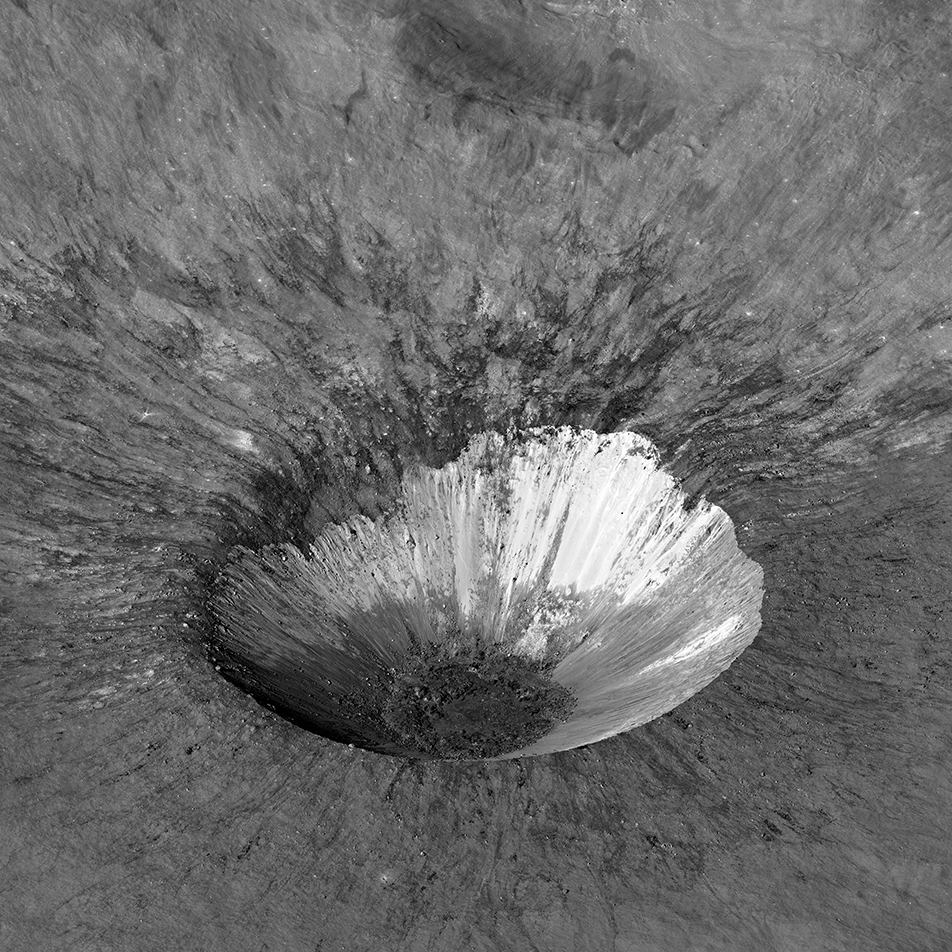
Some details of the impact process are still not well known. However, LROC images of very young craters are giving scientists new insights! In this image one can see delicate black streamers that landed on top of the main ejecta deposit. Either the black material was ejected late in the process or had a relatively high ejecta angle, thus taking longer to go up and come down relative to the main body of ejecta. What is that black material? Most likely it is impact melt that cooled so fast that most turned to glass rather minerals. Look at the zoomify image below. Right along the rim of the crater you can see small tongues of the black material, indicating that it was a fluid when emplaced (and now hardened into glass). Its low reflectance is caused by the light-absorbing properties of glass.
You may also notice something unusual about the ejecta. The eastern portion (top of the image) has higher reflectance than the western (bottom) portion. Perhaps Hell Q formed right on the edge of material thrown out of Tycho crater, or perhaps some other nearby crater? Or maybe the crater formed just at the subsurface contact of two different rock types? Explore the images and come to your own conclusion.

By the way, the crater takes its name from the Hungarian Astronomer Maximilian Hell, not that hot place. Hell Q is truly spectatcular - explore it in detail!
Related Featured Images
Published by Mark Robinson on 27 May 2018